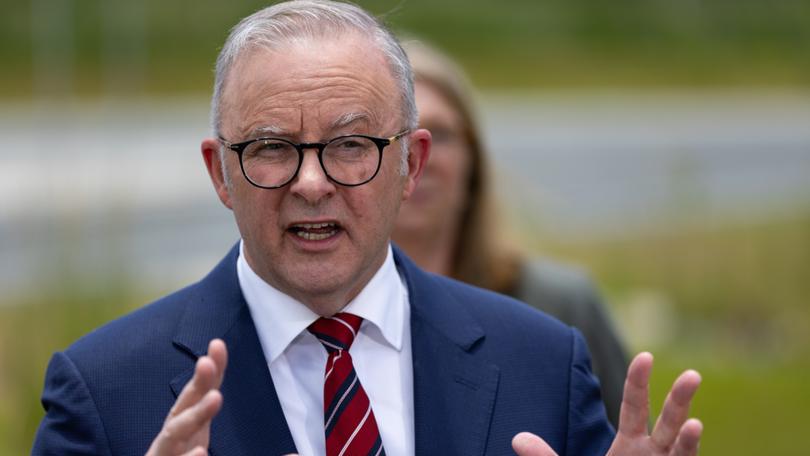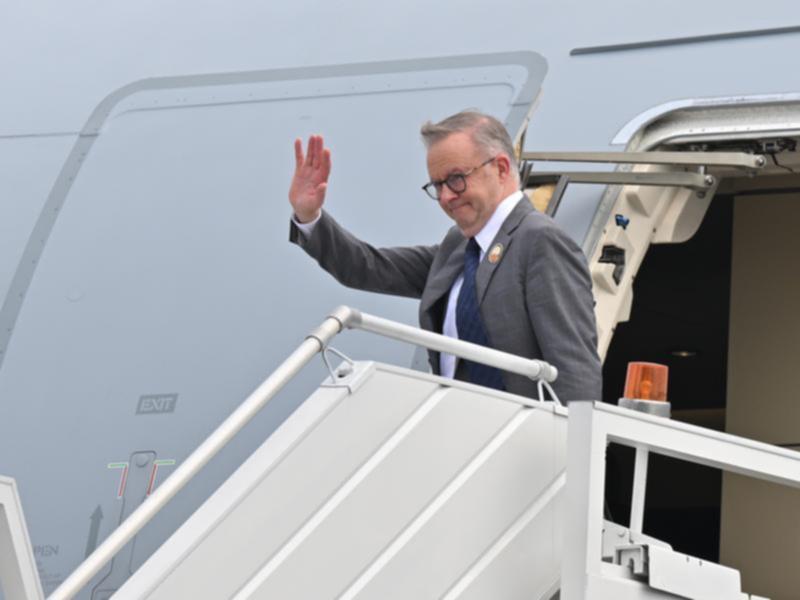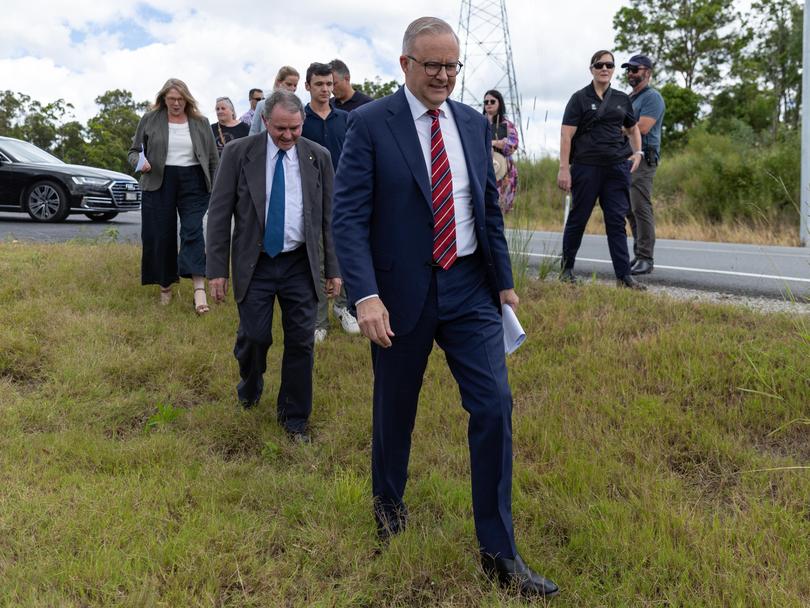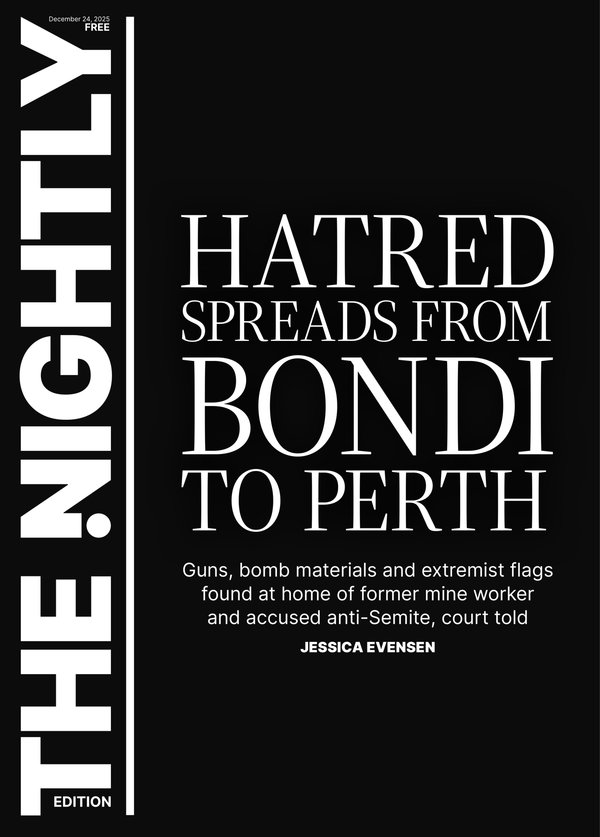Anthony Albanese fires unofficial election starting gun with $7.2b investment for Queensland’s Bruce Highway

The Prime Minister ran straight from the starting block on Monday, kicking off the first week of 2025 with an unofficial re-election pitch to “build Australia’s future” with billions for ailing roads, and spruiking Government milestones on health and childcare.
The timing of Anthony Albanese’s tour of Queensland, the NT and Western Australia this week – as much of country emerges slowly from Christmas and New Years festivities – has raised eyebrows, and fuelled speculation of a Federal poll far in advance of the May 17 deadline.
“They’re out there campaigning. There’s no doubt about that,” Tasmanian Senator Jacqui Lambie told Sky News.
Sign up to The Nightly's newsletters.
Get the first look at the digital newspaper, curated daily stories and breaking headlines delivered to your inbox.
By continuing you agree to our Terms and Privacy Policy.“Is Christmas time a good idea to do it? Mate, it usually annoys people more than anything else,” she added with characteristic bluntness.
“We only finished the first week in the new year. When we’re going into an election, I just think people want to have their holidays.”
With the PM set to visit marginal seats across the country this week, the Australian Greens said they were “ready to go” whenever he decides to call the election.
“Poll after poll shows we are heading towards a power-sharing parliament after the next election,’ said acting leader, Senator Sarah Hanson-Young.
“The Greens have been clear that if this happens, we’ll push Labor to stop approving new coal and gas mines and end native forest logging,” she said, reinforcing the Greens’ own election offering. “We also want to see dental put into Medicare.”
Shadow treasurer Angus Taylor and deputy Liberal leader Sussan Ley led the Coalition’s new year offensive, with a charge that Australia’s decade of lost living standards won’t be recovered until at least 2030 and that a failed economic plan has delivered “soaring energy costs, stalling housing constructions and record numbers of business insolvencies.”
Writing in the Nightly, Mr Taylor said that Australia remains “at the back of the pack in the inflation fight” while interest rates have fallen in the US, UK, Canada, Eurozone and New Zealand.
“The Albanese Labor Government’s addiction to spending is keeping inflation and therefore interest rates high. Since coming to power, it has added $347 billion in spending. In the last financial year alone, it has spent more than what was spent at the peak of the pandemic,” he said.
Embarking on his multi-state blitz this week in Gympie, Queensland, Mr Albanese dismissed any suggestion he was trying to buy votes with a $7.2bn promise to upgrade the 1,673-km Bruce Highway to a three-star safety rating.
As he announced the long-awaited funding for the safe Coalition seat of Wide Bay, the Prime Minister stressed he was merely “determined to represent all Australians”.
But the investment announcement, ahead of a flurry of local media interviews, was wrapped in a clarion election cry.
“The 2025 election will be a clear choice: Labor building Australia’s future or a Coalition determined to return Australia backwards and costing more under Peter Dutton – that is a choice Australians will have,” Mr Albanese said before listing a familiar roll of best hits of his administration.
Chatter within diplomatic and bureaucratic circles in Canberra is hedging towards the expectation of an earlier election pinned to the reality that an interest rate cut is unlikely to boost household budgets before May, and to avoid the risk of the economy taking a turn for the worse.
Economists are hesitant to enter the political fray but have offered a sober analysis of unpredictable economic factors that could push the Government to fire the starting gun earlier than the last cut-off point for its three-year term in office in May.
Warren Hogan, Judo Bank’s chief economic adviser, said conditions had not been met for a rate cut “at any time in the next six months”, warning that the question of inflation picking up again was a live threat.

While the economy had improved in the last six months, he cautioned the plummeting Australian dollar could add new inflationary pressures.
“The weakness in the Aussie dollar is inherently inflationary… It’s like a rate cut in and of itself, and I think that reduces the comfort the board would have with cutting rates yet,” he told The Nightly.
“It makes getting inflation back to band more complicated. The exact impact is a bit uncertain, but the direction is only going to be one way.
“If you start to see evidence of it trickling down into prices of all imported goods and that goes up, that will filter through to final consumer prices and that’s a real worry for the RBA.
“It makes it very hard for them to cut interest rates, when in my view the case for a cut was already pretty weak.”
EY Chief Regional Economist for Oceania, Cherelle Murphy, told the Nightly that while tight monetary policies and government rebates had put pressure on headline inflation there was a risk it would not keep falling.
“There’s enough risks out there to suggest that although inflation is on a downward trajectory, it’s going to take a while to get to where it needs to be, between two and three per cent,” she said.
Inflation had peaked lower and later than in the UK, US and the Eurozone, leaving Australia lagging behind in cutting rates, but “it doesn’t necessarily mean that we are not going to get there. It’s just that the timing is a little different”.
A strong labour market creating slower pressure on inflation, low productivity growth and a tight housing marker were factors peculiar to Australia, Ms Murphy added.
But a postwar high in public spending to about 28 per cent of GDP, and projections that this would rise even more in the next couple of years may be contributing to inflation, she said.
“When you think about the costs of building a new road, the same labour and materials are contributing to building that road that you’d be using to build a home,” she said.
“So, in some ways it’s pushing up demand for labour and materials, and if that wasn’t there, you might not get such high inflation in the housing sector.”
Although it was not a “one for one,” current economic conditions meant the Government was walking a fine line between investment in necessary public services without creating inflation in other key areas.

“Both Commonwealth and State governments, while they’ve been adding the spending, they’re not taking it away in other areas. So it grows and grows without being balanced out,” said Ms Murphy.
“And when you’ve got an economy that’s operating, as economists would say, above capacity, then the natural follow from that is higher inflation.”
Independent economist Chris Richardson was more optimistic about the prospect of a silver bullet rate cut.
“The only fast way to improve living standards in Australia is for interest rates to drop. There is no other magic wand… There is a chance of it happening in the middle of February,” he said, pointing to improving underlying inflation figures.
“From the Government’s perspective, they would love to see one – that would help give them momentum and help free them up and allow them to do some naughty things.”
It could give Labor license to make cost-of-living announcements, he said, anticipating it would include extending the energy rebate and more money for childcare.
“If there’s a rate cut, it’s a signal for them to go for it. If there’s not a cut, it’s still a signal, the Government will just be more informed about how much they can do,” he said.
“I would say we get the fistful of cash after the RBA announces one way or another on February 18.”
